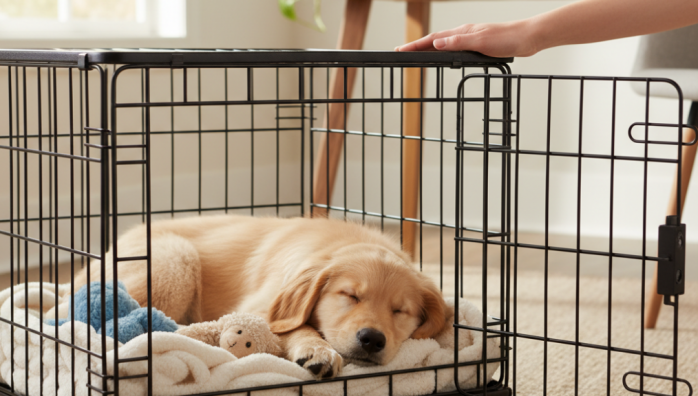Crate Training for Pet Separation Anxiety
by admin in Pet Care Basics 18 - Last Update November 25, 2025

When I first started working from home, I imagined it would be a paradise for my dog, Finn. More cuddles, more walks, constant company. But I quickly discovered a downside I hadn\'t anticipated. The moment I tried to leave the house for groceries or a quick coffee, his world would fall apart. The whining, the scratching at the door... it was classic separation anxiety, and it broke my heart. It felt like my constant presence had made my absence even more terrifying for him. That\'s when I decided to revisit an old tool with a new perspective: the crate.
Reframing the crate from a cage to a sanctuary
Honestly, my first attempts at crate training years ago were a disaster. I saw it as a place to \'put\' him when he was in the way. This time, I knew I had to approach it differently. The goal wasn\'t to confine him, but to give him his own personal, safe space—a den where he could feel secure even when I wasn\'t in the room. This mental shift was the most crucial step for both of us.
Making the crate the best place on earth
I started by making the crate irresistible. I placed his favorite soft blanket inside, along with a durable chew toy that he only got when he was in his crate. I\'d toss high-value treats inside and let him go in and out at his own will, with the door always open. We never used it for punishment. It became a \'magic\' spot where good things happened. I\'d feed him his meals in there, just placing the bowl at the front at first, then gradually moving it further back as he got more comfortable.
The slow and steady training process
Once he was happily entering the crate on his own, I started closing the door for just a few seconds, immediately rewarding him with a treat and praise when I opened it. We worked our way up from seconds to minutes, all while I was still in the same room. It was painfully slow, but I learned that patience is everything. Rushing this process is the fastest way to undo all your hard work.
Practicing departures
The real test was leaving the room. I started by closing the door, walking out of sight for 10 seconds, and then returning calmly before he had a chance to get anxious. I slowly increased the duration. I also made my \'leaving\' cues (like picking up my keys or putting on my shoes) less of a big deal. I\'d jingle my keys and then just sit on the sofa. This helped desensitize him to the triggers that signaled my departure.
It\'s been a long journey, and it\'s not a magic cure. Finn still has his moments, but his crate is now his genuine safe haven. He often naps in there with the door open, just because he wants to. For any remote worker facing this challenge, I can\'t stress this enough: see the crate as a tool for building confidence, not for confinement. Of course, every dog is different, and what worked for Finn might need adjusting for yours. I always recommend chatting with your vet or a certified animal behaviorist to create a plan tailored to your pet\'s specific needs.














